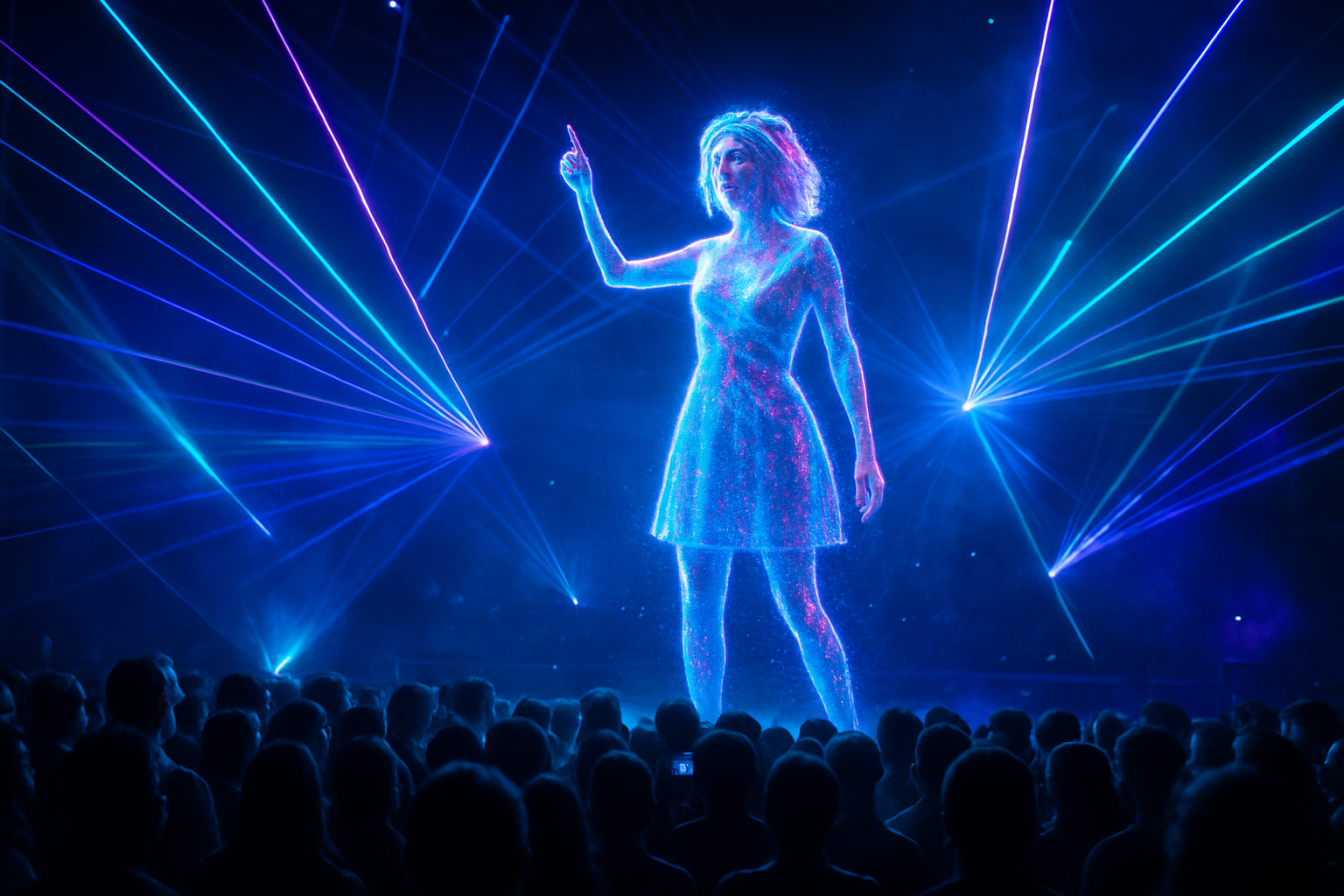Holographic Orchestras: The Future of Live Music Performance
In the ever-evolving landscape of live music, a groundbreaking technology is revolutionizing the concert experience. Holographic orchestras, once confined to the realm of science fiction, are now becoming a reality, captivating audiences with their innovative blend of traditional musicianship and cutting-edge visual spectacle. This emerging trend is not only transforming how we experience classical music but also challenging our perceptions of live performance and artistic presence.

Technological Marvels Behind the Curtain
At the heart of holographic orchestras lies a complex interplay of advanced technologies. High-definition laser projectors, motion capture systems, and sophisticated audio processing work in tandem to create a convincing illusion of three-dimensional musicians. The process involves recording performances of individual musicians, which are then digitally reconstructed and projected onto specially designed stages. Real-time rendering allows for dynamic adjustments, ensuring the virtual performers stay in sync with live conductors and soloists.
Redefining the Concert Experience
Holographic orchestras are not merely a technological gimmick; they are reshaping the very nature of live music performances. Audiences can now witness historically accurate recreations of legendary ensembles or experience impossible collaborations between musicians from different eras. This technology also opens up new possibilities for music education, allowing students to observe and interact with virtual master classes led by renowned musicians from around the world.
The Artistic Implications
The advent of holographic orchestras has sparked intense debates within the classical music community. Purists argue that the technology diminishes the authenticity and spontaneity of live performance, while proponents see it as a way to democratize access to world-class music. Composers and conductors are exploring new creative avenues, crafting pieces specifically designed for holographic performances that push the boundaries of what’s possible in traditional concert halls.
Challenges and Future Prospects
Despite its promise, holographic orchestra technology faces several hurdles. The high cost of implementation limits its widespread adoption, and concerns about the potential replacement of live musicians persist. However, as the technology continues to evolve and become more accessible, industry experts predict a surge in holographic performances across various musical genres. The future may see hybrid concerts where live and holographic musicians seamlessly interact, creating unprecedented musical experiences.
Cultural Impact and Global Reach
Holographic orchestras are not just changing how we experience music; they’re also breaking down geographical barriers. Remote audiences can now attend virtual concerts featuring holographic projections of world-renowned orchestras, expanding the reach of classical music to new corners of the globe. This democratization of access is fostering a renewed interest in orchestral music among younger generations, potentially securing the future of this art form in an increasingly digital world.
Ethical Considerations in Virtual Performances
As holographic technology advances, it raises important ethical questions about the nature of performance and artistic integrity. The ability to recreate deceased musicians or manipulate historical performances brings both exciting possibilities and complex moral dilemmas. The music industry is grappling with issues of consent, copyright, and the preservation of artistic legacy in this new digital frontier. Striking a balance between innovation and respect for artistic intention will be crucial as holographic orchestras become more prevalent.
The Economic Landscape of Holographic Music
The emergence of holographic orchestras is reshaping the economic model of the music industry. While the initial investment in technology is substantial, the potential for scalability and reduced touring costs presents new opportunities for orchestras and venues alike. This shift is prompting a reevaluation of ticket pricing, revenue sharing, and the very concept of live music as a commodity. As the technology becomes more refined and cost-effective, it could potentially revitalize struggling concert halls and bring orchestral music to underserved communities.
A New Era of Musical Collaboration
Holographic technology is fostering unprecedented collaborations in the music world. Composers can now work with virtual ensembles to test and refine their compositions before live performances. Musicians from different parts of the world can perform together in real-time, transcending physical boundaries. This new paradigm of collaboration is not only enhancing creative possibilities but also promoting cultural exchange and understanding through music.
The Role of Artificial Intelligence in Holographic Orchestras
As holographic orchestra technology evolves, artificial intelligence is playing an increasingly significant role. AI algorithms are being developed to analyze and replicate the nuanced gestures and expressions of conductors and musicians, enhancing the realism of holographic performances. This integration of AI opens up possibilities for interactive concerts where holographic performers can respond to live audience reactions, creating a more dynamic and engaging experience.





